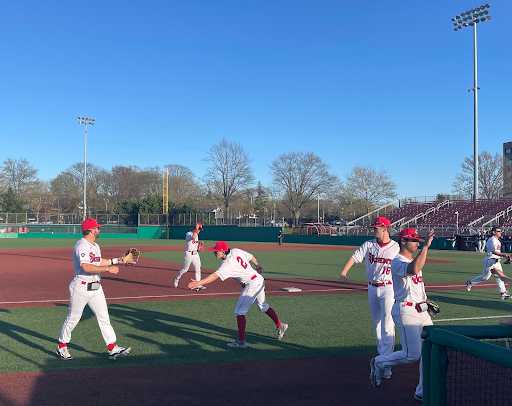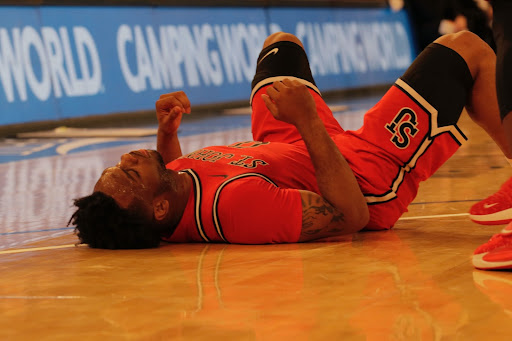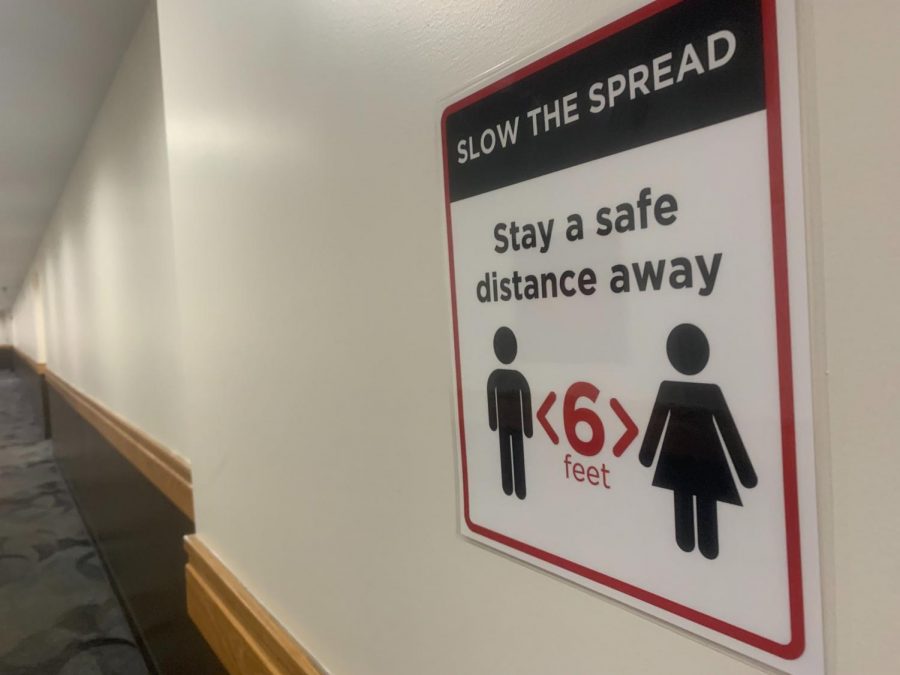Ian Stone is a frustrated head coach.
It’s not because his women’s soccer team just suffered a bad loss. It’s not because the squad got ousted from a Big East tournament berth √¢?” St. John’s is very much in the midst of the playoff race.
The reason Stone is perturbed is because of something he cannot control: injuries.
The women’s soccer team has been plagued with injuries over the past three years, and it seems like the epidemic is only intensifying.
“There’s just been so many and [they are] so random,” Stone said.
Since last season, key players Natasha Lee, Erin Henderson, Kaitlin Schmidt, Susan Byrne, Erin Bohn, Tracey Rollings, and Laura Burlacu have all been injured at least once. Some twice.
It has gotten to the point where one has to ask not who has been injured, but who has not been.
“Something has to change with college soccer,” Stone said. “It’s getting to the stage that we’re kind of almost anticipating that there are going to be at least three of our players not playing [because of injury] at any one stage. That shouldn’t be the case.”
No, it should not be. Athletes who compete in sports are obviously more predisposed to injuries than most people.
But with the kind of plague that injuries have washed over the women’s soccer team, one has to wonder, what gives?
It has to go beyond just a coincidence or an uncommon amount of physical play. The other teams on campus √¢?” and around the country √¢?” are physical, as well.
Can this just be a black cloud hanging over the St. John’s women’s soccer team? Not likely.
Once girls get to college, they have to deal with a much rougher, physical style of play √¢?” especially if it’s a Division I, Big East school, like St. John’s is.
Many times freshman, who are 17 or 18 years old are playing against seniors and 21- and 22-year-old graduate students, who are conditioned and more physically developed.
Stone says that it is not just the physical play; it’s how that play is controlled.
“In my opinion, it’s a little bit controversial, but the officiating isn’t great either,” Stone said. “They’re not calling much. They’re letting a lot go which doesn’t really protect the athletes.”
Added sophomore Krystle Jalalian, who was injured most of the season with a concussion: “Some refs get out of hand. They let girls kill each other.”
Stone sees another possibility as to why the injury rate has been so high. As teenagers, and sometimes even younger, girls are pushed to become star soccer players. Parents want to live vicariously through their children. Girls are nudged, sometimes too hard, to be the best.
“It’s a little bit of a hangover from what the girls are put through as youth players,” Stone said. “At some stage your body is going to kind of rebel against [you] a little bit. When you’re 15 [years old] you don’t think anything of it, but it’s going to affect you at some stage.”
Some players are put through uncommonly brutal schedules as youths. There are girls in this country that practice twice a day, seven days a week between school and club teams.
And that’s not even taking into account games, tournaments, summer leagues, .
College soccer coaches are constantly recruiting, so girls feel the pressure of playing hard in every game and every practice to ensure a bad impression is not made on people who will be able to offer them scholarships one day.
“Unfortunately, it gets to a stage where these tournaments and things are big moneymakers,” Stone said. “From those organizations’ point of view, they’re going to keep doing it. The kids feel that they have to be out there because college coaches are going to be out there. Some sports have recruiting calendars. It isn’t that way with soccer. It’s like 365 days a year.”
That is borderline exploitation and recruiting schedules should be implemented. The injury statistics tell it all.
St. John’s strength and conditioning has also been questioned recently. There is a group on the school’s version of facebook.com titled, “I have an Injury Because My Strength Coach is an accountancy Major.”
The title makes reference to Robert Basile, St. John’s director of strength and conditioning since May 2001, having a bachelor’s of science degree in accounting.
Fourteen athletes, mostly women’s soccer players, are part of the group.
The group description reads: “Ever wonder why when you play for St. John’s sports teams that you strangely get an onset of injuries?”
Obviously, the injury troubles are seen as a problem not just to Stone, but the athletes themselves.
Something needs to be done about the absurd amount of injuries sustained.
It has stopped becoming an issue of whether or not a female athlete will be able to play in the game. The worry now is that permanent physical damage might be obtained.
“Some of these games,” Stone said, “it’s like the WWF (World Wrestling Federation) out there.”
Pro wrestling is pretty much a fake. But this issue needs some real attention paid to it – immediately.















